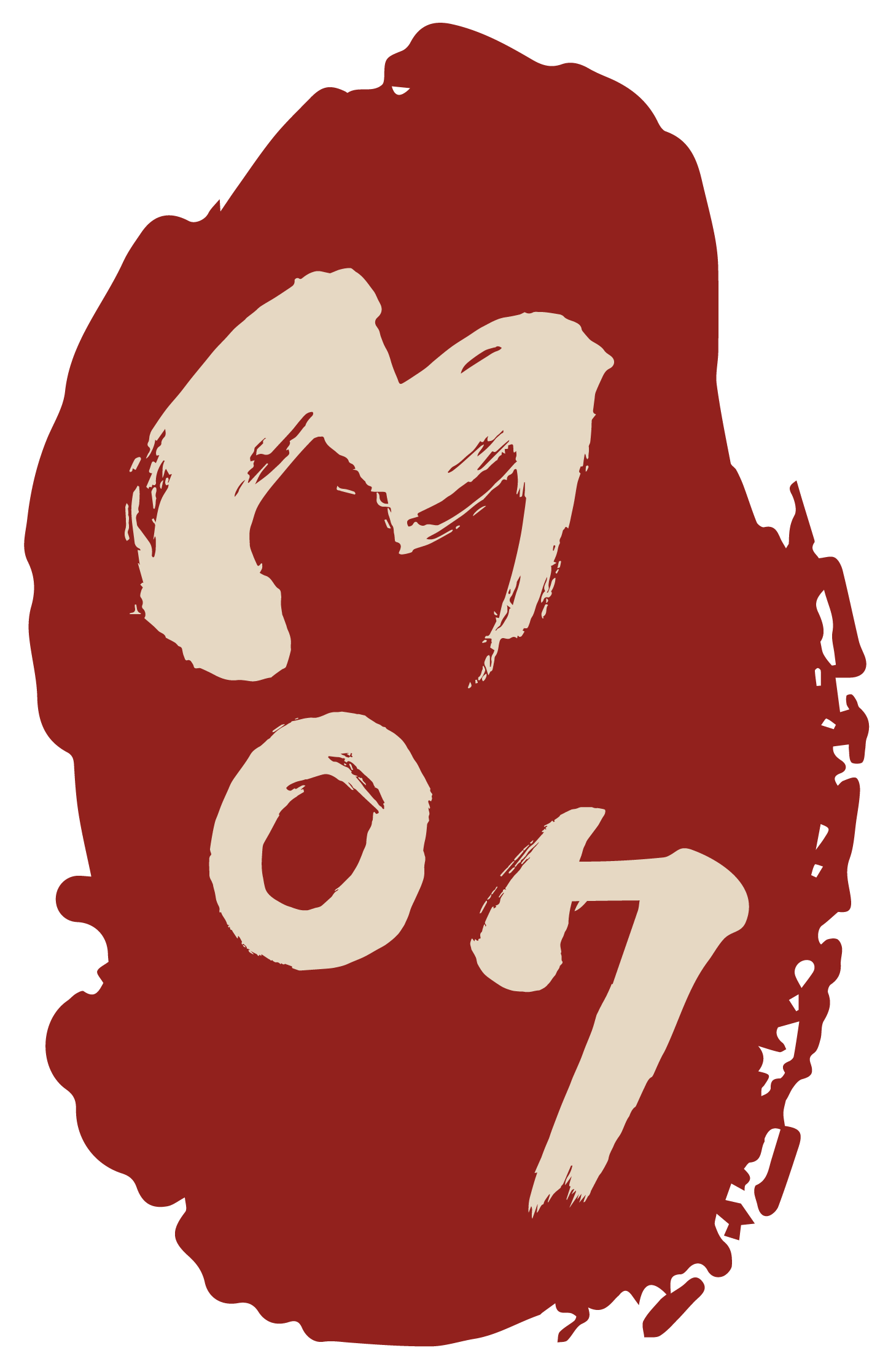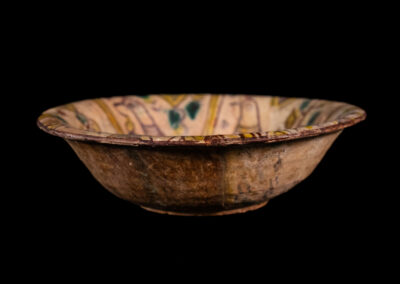Bowl with Peacocks
Bowl
Bowl with an edge curved outwards and a small standfoot. Inside painted with motifs like peacocks, tendrils, geometric leaf-plants and fruit. Outside: Remains from geometric patterns, vertical stripes and dashes/hints of grass in green and brown.
Object ID
Persia_009
Age
9th – 10th century AD
Material
Ceramics / Fayence
Color
Brown / beige background. Painted
Diameter (top)
19.4 cm
Diameter (standfoot)
7.9 cm
Height
5.3 cm
Condition
Good
Price
on request
Description
The bowl with peacocks comes from Nishnapur (Chorosan, North-Eastern Iran). [1] It has an edge curved outwards and finishes in brown color. There is a small foot. The main colors are brown, yellow and turquois. Inside paintings cover the bowl completely. There are five fields, in between each with a colorful peacock with a small crown, appearantly eating froot, geometric leaf-plants and a kind of tendrils. Outside the bowl is divided by vertical green stripes into seven fields. There are overall remains from former painting with brown-yellow-beige basic design, dashes/hints may be grass in green and brown. The variety of colors was basded on a paonting technique with colorful liquid clay, the so-called slip painting. The clay served as an adhesive for the colors. [2]
The peacock is of great representational meaning because the regrowing feathers made him a symbol of renewal, immortality and eternity.
The number „five“, involved in the design of this bowl, entered according Lao Tse (6th century BC) early into Chinese number mysticism: There was the imagination of five colors, five moral qualities (humanity, sense of duty, reliability, wisdom and ceremonial behavior) and five luckiest appearances (prosperity, long life, quietness and peace, virtue, and a life without illness). „Five“ was a numbers classic that related also to many other areas of human life. [3] (HV)
________________________
[1] Fontana, Maria Vittoria (2003): Frühislamische Kunst. In: Seipel, Wilfried (Hg.): 7000 Jahre persische Kunst. Meisterwerke aus dem Iranischen Nationalmuseum in Teheran. Antikenmuseum Basel/ Sammlung Ludwig GmbH Bonn/ Skira editore Milano/ Kunsthistorisches Museum Wien. 314 und Abb. 316
[2] Fontana, ibid. 299 und 312 – 320
[3] Eberhard, Wolfram (1983): Lexikon chinesischer Symbole. Geheime Sinnbilder in Kunst und Literatur, Leben und Denken der Chinesen. Eugen Diederichs Verlag. Köln. 97-99






